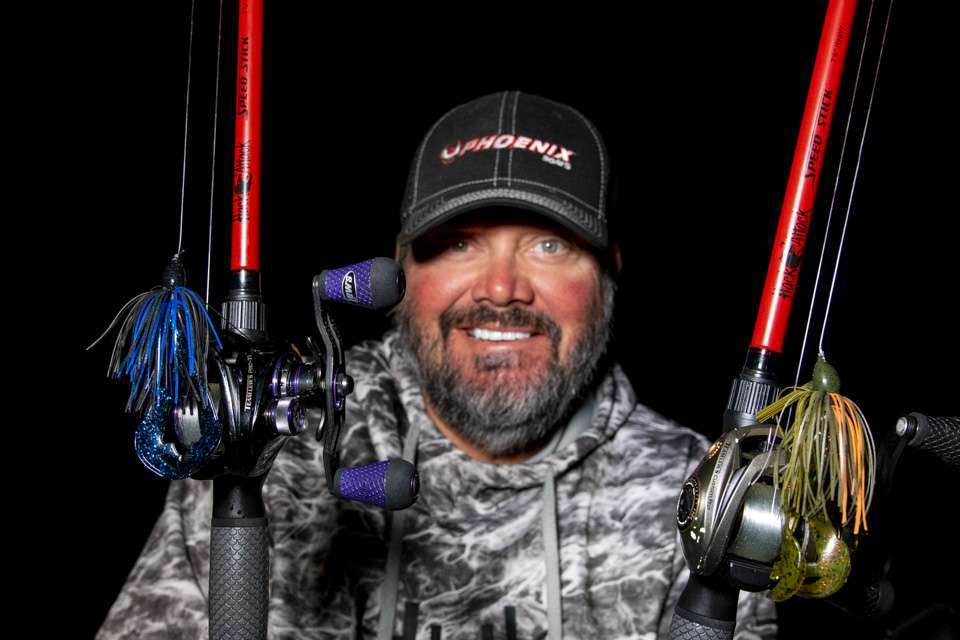
In Greg Hackney’s mind, there are very few “bad” times to fish a jig, but winter months might be among the best.
“Water temperatures below 55 degrees can be the best time to catch big fish,” said the Louisiana Elite pro. “You might only get six bites a day, but most will be big ones.”
Larger bass like big profile lures that move slowly during the winter, and the jig is perfect for that.
“Some of my best jig days have come from December through February and on cloudy, nasty days, especially when a front is passing,” Hackney explained.
Here are his three keys to winter jig fishing:
Read the weather and water conditions
On extremely cold days, Hackney has more success with a jig under cloudy skies.
“That’s when the fish tend to cling to the bottom during the winter,” he explained. “They often suspend when it’s sunny that time of year, which is often the opposite of summer conditions. When it’s sunny, they’re seeking that warmer comfort zone higher in the water.”
Clear water is important as well. Dirty water is OK in the summer, but winter fish need to see the bait because their strike zone is smaller.
“And, bass in cold, dirty water just aren’t as active,” he noted.
Look for structure and cover
Vertical structure comes into play during the winter. Hackney says the water doesn’t have to be deep, but he prefers fishing where there is a steep, deep drop nearby.
“It can be a creek channel or a bluff bank,” he offered. “The key is that the fish have easy access to move up and down; they won’t move across flats when it’s cold.”
Hackney likes to sit over deep water and pitch to the shallow side. It also allows him to cast along the bottom of the steep break.
“When the fish are deeper, all you have to do is drag your jig in front of them and they’ll bite it,” he said.
The topside of the break needs some kind of cover. Hackney says winter bass want to cling next to something, whether it’s a brush pile, standing timber, grass bed or rocks.
“During summer they will roam on structure chasing shad, but during cold months they hang on the key spot of the structure and generally the cover closest to the drop.”
Present the jig properly
Hackney throws black and blue jigs almost exclusively during winter because, “it’s a confidence thing, and I think dark colors work best when the fish are slowed down by the weather.”
Hackney prefers the Strike King, 3/8-ounce Hack Attack Jig with braided line in shallow water applications, but will go to a 1/2-ounce Strike King Structure Jig (that has a smaller hook) with fluorocarbon line when fishing deep.
“The lighter jig makes me fish slower, and that’s how the fish want it,” he described. “When fishing the heavier jig in deeper water, I try to stay with 12- to 14-pound fluorocarbon. You have to be able to feel every little bite.”
For trailers, he will use the Rage Craw when the water temp is 49 to 55 degrees, noting it helps slow the fall of the jig. When the water is colder, he opts for a KVD Chunk which has less action.
Anytime you’re fishing a jig during cold weather, it’s important to make multiple casts to a likely target. Hackney will hit a spot four or five times before moving to the next.
“If it’s the right spot, I will fish it for 15 minutes, give it a rest and go back in 15 minutes and hit it again,” he explained. “Work every piece of cover thoroughly; the bigger fish have seen a lot of lures, so they are reluctant to jump on the first thing that comes by.”
Hackney doesn’t hop his jig in the winter; he pulls it, maintaining contact with the bottom and cover at all times.
“Remember, you’re fishing for a few bites a day, but the ones you get could be from the biggest bass you’ll catch all year.”
Originally published in 2014.





